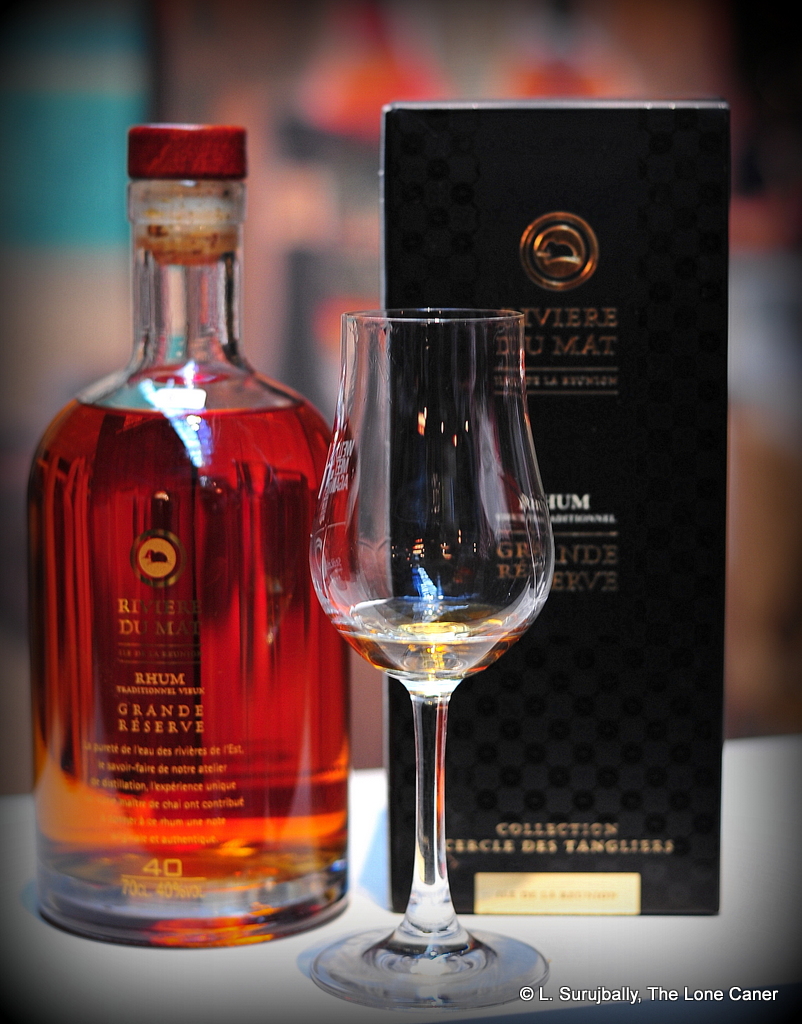
A tasty, svelte, supple rum like this brings home the point of how widespread the world of rum is, how we are too often satisfied with too little, and why should demand more. Even at 40%, this rum is quite a drinking experience.
Réunion? Quick, place that on a map.
Casting around for something to look at to close out 2014, I settled on this sprightly and supple forty percenter. This was not just because I wanted to cast a geographically wider net (though this is also true) – but because when you see a good rum, you really want to toot its horn a bit. While I’m no longer as stuck with loving only 40% rums as I used to be, there’s no reason for me to deny this rum its rightful plaudits. It’s good.
Appearance wise, I had no objections. Stiff cardboard box, round shouldered bottle, plastic tipped cork, all holding within them a golden-brown spirit with tints of red. It certainly smelled great, when I poured it out. For a rum as relatively lacking in oomph (compared to some of the Tiger Bay toughs I’ve been getting mugged by over the last months), the 40% ABV was really kind of fun. It was…well, zippy. Happy. It was zesty, light, clear and vegetal. I don’t know why, but I kept thinking of daisies, spring picnics on a green sunlit meadow somewhere. The rum felt like it was frolicking over the nose. Nothing heavy here, only scents of orange peel, sweet fresh sap, vanilla, light white flower petals dried between the leaves of an old book; guava and sugar cane and fresh mown grass after a light rain.
That same cheerful sprightliness was also evident on the palate. There were a few references that stated the core distillate was made from molasses, yet it is remarkable how the overall taste was light, and what clarity it displayed: it seemed to be more of an agricole than anything else. Those same easy-going floral notes carried over, and here the ageing was more evident – baked candied apples, ginger, baking spices, vanilla and sweet wooden notes, very well done. Adding anything to this is pointless because it has a delicacy to it that would be rent apart by anything but the mildest of mixing agents – even water dilutes it too much. As for the fade, it was medium long, pleasantly aromatic, and tickled your tonsils rather than trying to skewer them. All in all, a lovely très vieux with a little bit of bite to let you know it was there, and not to be taken as an underproof. You could almost imagine it wearing shades and a Hawaiian shirt on a beach somewhere, watching the tide come in.
The Grande Réserve is a blend of rums aged six years or more in Limousin barrels, and well put together – one hardly tasted smoke and tannins and leather of any kind. It hails from the island of Réunion, which is located in the Indian Ocean, east of Madagascar. Although originally settled by the Portuguese, by the 16th Century, it was taken over by the French, and these days is a French Department. Because of that, it is considered part of France, as if it was right on the mainland, and therefore also part of the Eurozone.
Réunion has quite a pedigree with respect to rum. Sugar has always and traditionally been the chief agricultural export crop, and the first stills were brought by the French to the Island as far back as 1704; in 1815 the first modern distillery set up by Charles Panon-Desbassyns and coincided with the start of large-scale sugar-production, which took up just about all the sugar-cane harvested. The production of local ‘arack’ (or ‘sugar brandy’, produced from sugar-cane juice) was limited to production from the residue of sugar manufacture. The number of distilleries fluctuated from six in 1842 to thirty one in 1928, down to one during the second world war, and three presently: Savanna, Rivière du Mât and Isautier. All three produce the most famous brand of the island: Rhum Charrette. The other well-known brands of these distilleries are Savanna rums, which is a brand that consists of more than 12 different rums (and there I was, grumbling about the seven rums in Ocean’s Atlantic edition, remember?), the Rivière du Mât, Isautier, Chatel, Varangues and Belle-Vue rums.
All in all, then, this is a rum that is light, easygoing and an absolute pleasure to drink neat. As an entry level vieux, it may be a tough ‘un to beat. I can’t wait to write about the XO by the same company: that one is also good, but also more pricey. If you’re looking for something off the beaten track, with a taste all its own, not too expensive, with aromatic, clear and slightly fruity notes, then this is as good a rum to buy as any others…others which may be more available and perhaps better known in the bars of the west than Rivière-du-Mât’s rum — but not necessarily better.
(#193. 85/100)